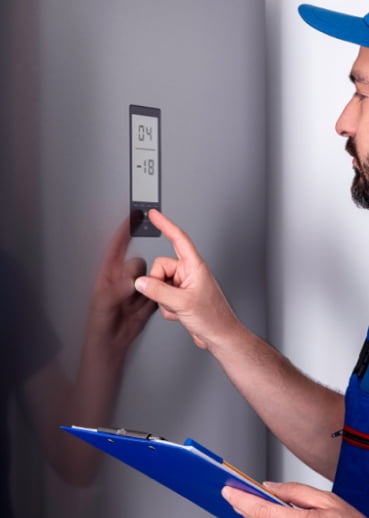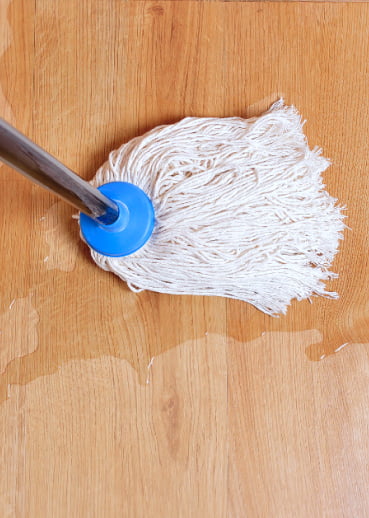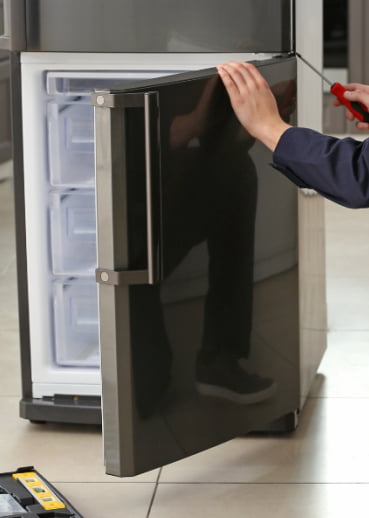Are there any questions left?
Contact us and we will answer!
COMMON REFRIGERATOR PROBLEMS AND HOW TO FIX THEM: A GUIDE BY FASTAID
A malfunctioning refrigerator can disrupt your daily routine and pose a risk to the freshness and safety of your food. That's why addressing any issues promptly is crucial. FastAid Appliance Repair understands the importance of a well-functioning refrigerator, and we are dedicated to providing reliable solutions for common refrigerator problems. With our team of skilled technicians in Charlotte, NC, you can trust us to diagnose and resolve a wide range of refrigerator issues efficiently and effectively.
In this comprehensive guide, we aim to empower homeowners with the knowledge and tools to troubleshoot and fix common refrigerator problems on their own. We understand that not every issue requires professional intervention, and that's why we provide step-by-step troubleshooting and repair tips. Whether you're dealing with temperature fluctuations, excessive frost or ice buildup, water leakage, power issues, strange noises, door seal problems, ice maker malfunctions, or other refrigerator repairs, our guide has you covered.
By following the guidance in this guide, you can save time and money by addressing refrigerator problems yourself whenever possible. However, if you encounter more complex or challenging issues, the FastAid Appliance Repair team is always ready to assist you. We have the expertise and experience to handle any refrigerator repair, ensuring that your appliance operates optimally and reliably.
Common Refrigerator Problems
Don't let common refrigerator problems disrupt your daily life. With FastAid Appliance Repair and this comprehensive guide, you can regain control over your refrigerator's performance and keep your food fresh and safe. Let's dive into the world of refrigerator troubleshooting and repairs, empowering you to become a savvy homeowner when it comes to maintaining your appliance.

Refrigerator Temperature Fluctuations
One common refrigerator problem is temperature fluctuations, which can lead to spoiled food and inefficient cooling. We'll explore possible causes, such as a faulty thermostat, malfunctioning defrost system, or inadequate airflow. We'll provide step-by-step instructions on how to troubleshoot and fix these issues, ensuring your refrigerator maintains the desired temperature consistently.

- Check the Temperature Settings: Set the temperature to the recommended level (usually between 35°F and 38°F for the refrigerator and 0°F for the freezer). Avoid excessively low temperatures.
- Allow Proper Airflow: Avoid overfilling the compartments and ensure adequate airflow by arranging items to allow circulation and not blocking vents.
- Clean the Condenser Coils: Remove dust and debris from the coils using a vacuum cleaner or brush. Clean them at least twice a year.
- Check the Door Seal: Inspect the gasket for damage and ensure a tight seal. Replace the gasket if necessary.
- Monitor the Thermometer: Use an appliance thermometer to monitor temperatures accurately and make adjustments as needed.
- Minimize Door Openings: Limit the frequency and duration of opening the door to prevent warm air from entering. Retrieve multiple items at once if possible.
- Regularly Defrost the Freezer: Follow the manufacturer's instructions to defrost the freezer and remove ice buildup.
Refrigerator Excessive Frost or Ice Buildup
Excessive frost or ice buildup in the freezer or refrigerator compartments can impede proper cooling and airflow. We'll delve into potential causes, such as a defective defrost system, broken door gasket, or clogged drain. Our guide will offer practical solutions to address these problems and prevent further frost accumulation.

- Defrost the Freezer:Remove all food items, unplug the refrigerator or turn off the freezer's power supply, and let the frost melt naturally. Wipe the interior dry before plugging it back in and returning the food.
- Check the Door Gasket: Inspect the gasket for cracks, tears, or gaps. Clean it with a mild detergent and warm water, ensuring it is free from debris. Replace a damaged gasket to maintain a proper seal.
- Clear the Drain Line: Use a soft brush or pipe cleaner to clear any debris or ice from the drain line. Flush it with a mixture of warm water and mild detergent to keep it clean and clear.
- Organize Food Items: Avoid overcrowding the freezer to allow proper airflow. Leave space between items and use airtight containers or freezer bags to reduce moisture and prevent excess frost.
- Monitor the Temperature: Set the temperature to the manufacturer's recommended levels and use an appliance thermometer to regularly monitor and make adjustments if needed.
Refrigerator Water Leakage
Discovering water leakage inside or around your refrigerator can be concerning. We'll explore common culprits, such as a faulty water supply line, defrost drain issues, or a malfunctioning water inlet valve. Our expert tips will guide you through the process of identifying the source of the leakage and implementing effective repairs.

- Check the Water Supply Line: Inspect the water supply line for damage, such as cracks or leaks. Ensure the connection is secure. Replace any damaged water supply line immediately to prevent further leakage.
- Clean the Defrost Drain: Regularly clean the defrost drain to prevent clogs. Use a soft brush or pipe cleaner to remove obstructions and flush warm water through the drain to keep it clear.
- Inspect the Water Inlet Valve: Check the water inlet valve for leaks or damage. Replace the valve if you notice any issues like cracks or drips to prevent water leakage.
- Ensure Properly Sealed Connections: Check and tighten all connections related to the water supply line, such as the water filter housing or the water inlet valve. Loose or faulty connections can cause leaks. Replace any faulty parts or tighten loose connections carefully.
- Clean and Inspect the Drain Pan: Regularly clean the drain pan to prevent dirt or cracks that may lead to water leakage. Ensure it is securely in place. Replace the drain pan if you notice any damage.
- Regularly Inspect the Door Gaskets: Check the door gaskets for damage or wear regularly. Clean them with mild detergent and warm water to remove debris. Replace damaged gaskets to maintain a proper seal and prevent water leakage.
Refrigerator Power Issues
When your refrigerator fails to turn on or experiences intermittent power problems, electrical issues may be at play. We'll discuss potential causes, such as a faulty power cord, compressor relay, or control board. Our guide will provide instructions on troubleshooting these power-related problems and restoring proper functionality.

- Check the Power Source: Ensure the refrigerator is properly plugged into a working power outlet. Test the outlet using another appliance or a voltage tester to verify its functionality. If the outlet is faulty, consult a qualified electrician for repairs.
- Inspect the Power Cord: Examine the power cord for damage like fraying or cuts. If there are any issues, unplug the refrigerator and replace the power cord with a compatible one. Avoid using extension cords or adapters that may affect performance.
- Reset the Circuit Breaker: Locate the circuit breaker or fuse box that controls the refrigerator's power supply. Reset a tripped breaker or replace a blown fuse of the same amperage. If the issue persists, seek professional assistance.
- Test the Outlet: Plug another appliance into the same outlet to determine if the problem lies with the refrigerator. If the other appliance works, proceed to the next steps.
- Check the Compressor Relay: Inspect the compressor relay near the back of the refrigerator, close to the compressor. Look for damage or burning. Replace a faulty relay with a compatible replacement.
- Examine the Control Board: Inspect the control board for visible damage or loose connections. Replace a faulty control board with a compatible replacement. Refer to the manual or contact the manufacturer for guidance.
- Seek Professional Help: If the power issues persist, it's recommended to contact a professional technician with expertise in refrigerator repairs. They can diagnose and address more complex electrical problems.
Refrigerator Strange Noises
Unusual noises coming from your refrigerator can be unsettling. We'll cover common noises like buzzing, grinding, or clicking sounds and explore their possible origins, such as a malfunctioning compressor, fan motor, or other internal components. Our troubleshooting tips will help you pinpoint the source of the noise and guide you through the necessary repairs.

- Identify the Noise: Pay attention to the specific type of noise your refrigerator is making, such as buzzing, grinding, clicking, or rattling. Different noises can indicate different issues, helping you pinpoint the problem.
- Level the Refrigerator: Ensure your refrigerator is level and stable. Adjust the leveling legs or use a leveling tool to balance it on all sides. This helps minimize vibrations and noise.
- Remove Obstructions: Clear any objects that may be touching or vibrating against the refrigerator. These obstructions can create additional noise and should be removed.
- Clean Condenser Coils: Dust and debris on the condenser coils can make the refrigerator work harder and generate louder noise. Unplug the refrigerator and gently clean the coils at the back or underneath using a vacuum cleaner or brush.
- Check the Fan Motor: Inspect the fan motor for damage or obstructions. A malfunctioning fan motor can cause unusual noises. Contact a professional technician if necessary.
- Assess the Compressor: Listen carefully to determine if the noise is coming from the compressor area. A faulty compressor can produce buzzing or rattling sounds. Seek assistance from a professional technician for compressor-related issues.
- Consult the User Manual: Refer to your refrigerator's manual for specific guidance on noise troubleshooting. It may provide information on common noises and potential solutions.
- Seek Professional Help: If the noise persists or you're uncertain about its source, contact a professional technician. They can accurately diagnose the problem and provide necessary repairs or guidance.
Refrigerator Door Seal Problems
A damaged or worn-out door seal can compromise your refrigerator's efficiency. We'll discuss the importance of a tight seal and explore how a faulty door gasket can lead to improper sealing and air leakage. Our guide will provide step-by-step instructions on replacing the door gasket to ensure optimal cooling conditions.

- Get the Right Replacement: Make sure you have the correct replacement gasket for your refrigerator model. Order it from the manufacturer or an authorized parts supplier.
- Prepare the Area: Clear the area around the refrigerator door and have a cloth ready for cleaning.
- Open the Door: Prop the refrigerator door open with a sturdy object.
- Remove the Old Gasket: Peel back the old gasket from one corner of the door. Use a screwdriver or putty knife if necessary.
- Clean the Surface: Thoroughly clean the door surface with a mild detergent or water-vinegar mixture. Let it dry.
- Install the New Gasket: Align one corner of the new gasket with the door corner. Press it onto the door, working your way around. Ensure it is straight and smooth.
- Secure the Gasket: Use clips or retainers to secure the gasket. Consult the user manual for guidance.
- Test the Seal: Gently close the door to check the seal. Adjust the gasket or clips if needed for a proper seal.
- Clean and Maintain: Clean the entire door and regularly inspect the gasket to keep it free from dirt and debris.
Refrigerator Ice Maker Malfunctions
Ice maker issues can be frustrating, affecting your ability to enjoy chilled beverages. We'll address common ice maker problems, such as a faulty water inlet valve, clogged water line, or malfunctioning ice maker module. Our comprehensive guide will offer troubleshooting steps and solutions to get your ice maker back in working order.

- Check Water Supply: Ensure the water supply is on and properly connected. Remove kinks and clear obstructions. Repair or replace the water line if there is a leak.
- Activate Ice Maker: Turn on the ice maker using the on/off switch located on the front or side of the ice maker or control panel.
- Inspect Fill Tube: Ensure the fill tube is not frozen or blocked. Remove any ice or debris using warm water or a cloth.
- Clear Ice and Debris: Remove any ice cubes or debris obstructing the ice maker with a plastic utensil.
- Reset the Ice Maker: Press and hold the reset button on the ice maker to perform a reset.
- Check Freezer Temperature: Ensure the freezer temperature is set between 0°F and 5°F (-18°C and -15°C).
- Inspect Water Inlet Valve: Check the water inlet valve for damage or clogs. Replace it if necessary.
- Clean the Ice Maker: Follow manufacturer instructions or use a warm water and mild detergent solution to clean the ice maker. Rinse and dry thoroughly.
- Seek Professional Service: If troubleshooting steps fail or further repairs are needed, contact a professional technician.
Other Refrigerator Repairs
In this section, we'll cover additional refrigerator repairs, such as malfunctioning lights, control panel issues, broken shelves, and drawers. Our expert technicians have the expertise to diagnose and fix various refrigerator components, ensuring your appliance functions optimally.
Malfunctioning Lights: If the lights inside your refrigerator are not working, it could be due to a faulty light bulb, a defective light switch, or a wiring issue. Start by replacing the bulb with a new one to see if that resolves the problem. If the lights still don't turn on, it may be necessary to replace the light switch or address any wiring problems. Our technicians can assess the situation and determine the appropriate solution.
Control Panel Issues: If you're experiencing problems with the control panel on your refrigerator, such as unresponsive buttons or error codes, it may indicate a control board malfunction. The control board controls various functions of the refrigerator, including temperature settings and ice maker operation. Our technicians can diagnose the issue and replace the control board if necessary.
Broken Shelves and Drawers: Over time, refrigerator shelves and drawers can become damaged or cracked. This can affect their usability and compromise the organization of your food items. Our technicians can assess the damage and provide suitable replacement shelves or drawers to restore functionality and organization.
Noisy Fan or Motor: If you're experiencing excessive noise coming from the fan or motor of your refrigerator, it could indicate a problem with these components. The fan or motor may be worn out, loose, or in need of lubrication. Our technicians can diagnose the source of the noise and perform the necessary repairs or replacements to restore quiet operation.
Leaking Water Dispenser: If your refrigerator has a water dispenser, a leaking issue can occur due to a faulty water inlet valve, cracked tubing, or a damaged dispenser mechanism. Our technicians can inspect the water dispenser system, identify the cause of the leak, and perform the required repairs or replacements to address the issue.
Professional Refrigerator Repair in Charlotte, NC
By following the troubleshooting tips and repair techniques provided in this guide, homeowners can address common refrigerator problems and extend the lifespan of their appliances, saving time, money, and preventing unnecessary food spoilage. FastAid Appliance Repair is committed to assisting customers in Charlotte, NC, with their refrigerator repair needs, providing fast and reliable service to ensure the smooth operation of their appliances.
For professional assistance with refrigerator repairs in Charlotte, NC, contact FastAid Appliance Repair today. Our skilled appliance repair technicians are ready to diagnose and resolve any refrigerator issue you may encounter. Trust us to keep your refrigerator running optimally and reliably.
Refrigerator Problems FAQs
A rattling noise in your refrigerator can be caused by several factors. One common culprit is loose or worn-out components, such as fan blades or motor mounts. It could also be due to the refrigerator not being level, causing vibrations. Check and tighten any loose components, and ensure that your refrigerator is level to eliminate the rattling noise.
Yes, replacing the water filter in your refrigerator is usually a straightforward process. Refer to your appliance's user manual to locate the filter and follow the manufacturer's instructions for replacement. It is recommended to replace the water filter every six months or as indicated by the manufacturer.
A bad odor in your refrigerator can be caused by spoiled food or food spills. Start by thoroughly cleaning the interior of the refrigerator, including shelves, drawers, and door seals, using a mixture of warm water and mild detergent. You can also place an open box of baking soda in the refrigerator to help absorb any lingering odors. If the odor persists, it might indicate a more serious issue, and it's advisable to have a professional technician inspect your appliance.
Yes, you can take steps to minimize frost buildup in your freezer. Make sure the freezer door is tightly sealed and the gasket is in good condition. Avoid leaving the freezer door open for extended periods and ensure that food items are properly wrapped or stored in airtight containers. It's also important to regularly defrost your freezer according to the manufacturer's recommendations to prevent excessive frost accumulation.